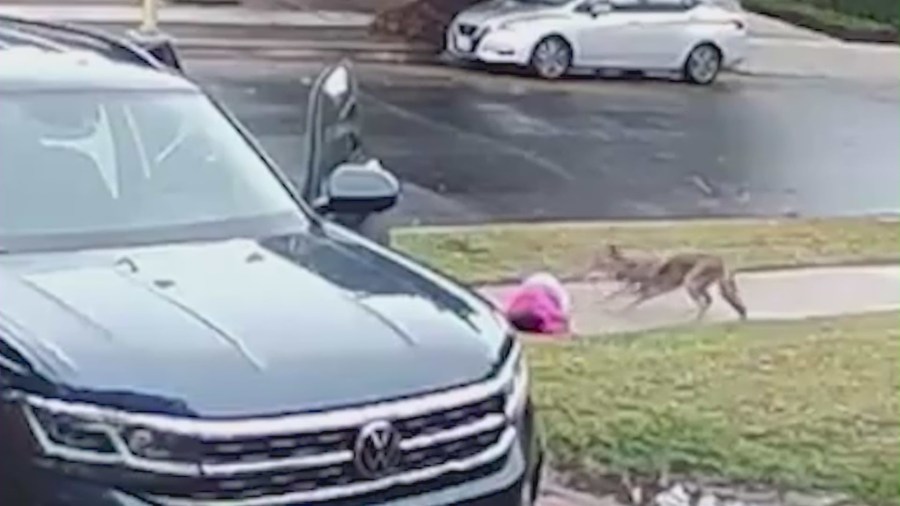With as many as 750,000 wild coyotes estimated to be living in California, conflicts with humans and pets are inevitable.
Among the recent cases, a coyote was captured on a Ring doorbell camera charging at a house cat inside a home in Mission Viejo, only to be stopped by a child safety gate. In Los Angeles’ Mar Vista neighborhood, a pack of coyotes has been stalking pets, and even attacked an older dog in its backyard.
In perhaps the most egregious case in recent years, a coyote attempted to drag away a child in broad daylight in Woodland Hills in 2022. The child survived, and the animal was later euthanized.

Coyote management plans in Southern California vary from city to city and are generally focused on conservation, coexistence and tolerance. Neighbors are taught how to avoid attracting coyotes in the first place by cutting off their access to human and pet food.
Killing the animals as a form of population control is almost never discussed.
In fact, a 2021 report from the California Department of Fish and Wildlife said a majority of Southern Californians oppose lethal controls of the coyote population, even in cases when they injure or kill pets and livestock.
This mirrors the sentiment toward other predators, such as bears and mountain lions; California tends to protect its wildlife, regardless of whether the populations are abundant or endangered.
In other western states, however, that isn’t the case.

In Utah, for example, killing coyotes is not only encouraged but rewarded – with cash.
Since 2012, the Beehive State has offered a bounty program that might seem cruel to many Californians. Hunters and trappers are paid $50 for each coyote jaw or scalp they bring to state wildlife officers.
“The best method is to store them in a plastic ziplock bag placed in a freezer,” the Utah Division of Wildlife Resources advises on its bounty website.
“The jaw (at least the front two-thirds of the jaw) and scalp (with both ears attached), however, must be sufficiently thawed so the ears can be notched and a tooth can be removed at the reimbursement location. Before freezing an entire head, place something in the mouth to keep the jaws open completely.”
Officials say the controversial program’s goal is to protect Utah’s big game population, specifically mule deer (which are also hunted).
Through 2022, Utah wildlife officials paid out $3.5 million on nearly 70,000 coyotes killed, according to The Salt Lake Tribune.
While the divide over wildlife management isn’t inherently a liberal vs. conservative issue, public opinion on hunting for sport often falls along party lines. South Dakota, Texas and Virginia also offer bounties on coyotes, although they are more limited than Utah’s program.
In California, hunters are allowed to freely kill coyotes with a valid hunting license, assuming they adhere to local firearm restrictions. Homeowners, of course, can legally kill a threatening animal on their own property – if they have the ability to humanely do so.
In most cases, homeowners will want to contact a professional instead. Tap here to report a coyote encounter to the California Department of Fish and Wildlife.












